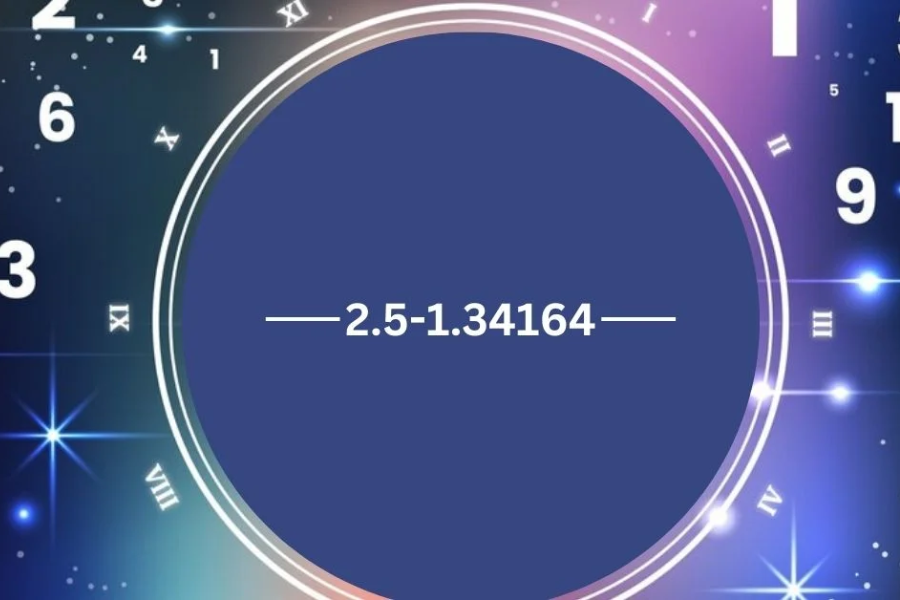Understanding the Significance of “2.5-1.34164”: A Deep Dive into Practical Applications
When you first see the expression “2.5-1.34164,” it may appear to be a straightforward subtraction. However, this small calculation can hold larger meanings and insights across various fields, from personal finance to engineering. In this guide, we’ll break down the calculation, “2.5-1.34164,” and explore how its precision and application can be valuable in real-world scenarios.
What Is “2.5-1.34164”?
At its core, “2.5-1.34164” is a simple mathematical subtraction where 1.34164 is taken from 2.5, yielding 1.15836. Though it may seem like just numbers, performing this precise calculation can be crucial in contexts where exactness is key.
Why Precision in “2.5-1.34164” Matters
It may seem trivial, but calculations like “2.5-1.34164” hold significance in areas where precision is essential. For example, in financial analysis, engineering, and even personal budgeting, understanding and using exact numbers is vital for accurate outcomes and informed decisions.
Breaking Down the Calculation
Simple Subtraction: “2.5-1.34164”
Let’s start with the arithmetic:
2.5 – 1.34164 = 1.15836
This result comes from subtracting a smaller decimal (1.34164) from a larger one (2.5). But why does this matter?
The Role of Decimal Precision
When dealing with a calculation like “2.5-1.34164,” the precision of each decimal place is important. Decimals help capture fractions of a number, making them crucial in fields where even a tiny variance can change the outcome—like in financial forecasting or engineering measurements.
Practical Uses of “2.5-1.34164”
Financial Planning and Analysis
In financial contexts, calculations often need to be exact. Whether calculating interest rates or tracking expenses, a precise result like “2.5-1.34164” helps ensure accuracy in budgeting and forecasts. This can also be useful for anyone managing personal finances, helping them keep track of exact spending.
Engineering Precision
Engineers rely on precise measurements to build safe and effective designs. Even a minor error can lead to significant consequences. For instance, the result of “2.5-1.34164” could be part of a tolerance calculation for machinery or construction specifications.
Everyday Financial Use
On a smaller scale, calculations like “2.5-1.34164” are valuable in everyday life, such as managing expenses. If you have $2.50 and spend $1.34, you’d perform this calculation to see that you have $1.15836 left, helping you keep within your budget.
Why Exactness in “2.5-1.34164” Enhances Decision-Making
Financial Predictions and Budgeting
For financial planners, exact numbers enable reliable predictions. In scenarios where small amounts add up over time, even minor errors can affect the final budget. Using a precise calculation like “2.5-1.34164” can ensure a more dependable analysis.
Engineering Accuracy
In engineering, precision can be critical for safety and functionality. A calculation as specific as “2.5-1.34164” might represent a part of a larger specification, ensuring that components fit and function together as intended.
Everyday Budgeting Accuracy
When managing personal budgets, using precise amounts is equally beneficial. Understanding exactly how much remains after each expense allows for better control over spending and a clearer view of available funds.
Instances and Illustrations
Example 1: Monthly Budget Tracking
If you have $2.50 left in a budget and plan to buy something for $1.34, the calculation “2.5-1.34164” tells you that you’ll have $1.15836 remaining. This can help you assess if the purchase is feasible.
Example 2: Tolerance in Engineering Design
In engineering, measurements must often fall within strict tolerances. If your base measurement is 2.5 units and you need to subtract 1.34164 to calculate a tolerance level, “2.5-1.34164” gives you a clear measurement for that allowance.
Example 3: Daily Spending
For instance, if you have $2.50 in coins and spend $1.34 on a snack, “2.5-1.34164” will quickly let you know you have $1.15836 left, simplifying small transactions.
Beyond the Basics: Analysis of “2.5-1.34164”
Relevance to Statistics
In statistics, precision affects the accuracy of conclusions. A small difference, as shown by “2.5-1.34164,” can be a vital component of a larger dataset where every decimal point contributes to the final analysis.
Error Margins and Exactness
Accuracy minimizes potential errors in any field. A calculation like “2.5-1.34164” shows how small margins of error can still have large impacts, especially when small mistakes build up over time.
Comparative Insights
In comparative analysis, precision aids in detecting trends and anomalies. The difference in “2.5-1.34164” could reveal patterns or discrepancies, providing clearer insights.
FAQs:
What is the importance of “2.5-1.34164” in finance?
This calculation can represent available funds after spending. It’s a common type of subtraction used in personal finance to track expenses and balance.
How does decimal accuracy impact results?
Precise decimals ensure accuracy in any field. Even small errors can have a big impact, so exact calculations like “2.5-1.34164” help maintain reliability.
How is “2.5-1.34164” used in practical situations?
It’s useful in budgeting, engineering measurements, and financial calculations, helping with decisions that require exact numbers.
Conclusion:
“2.5-1.34164” may look like a simple calculation, but it has implications across many areas, from financial planning to engineering and personal budgeting. This guide has shown how even basic calculations, when handled precisely, can improve decision-making and increase accuracy in a variety of contexts.
Keep an eye for more news & updates on Vents Radar!






